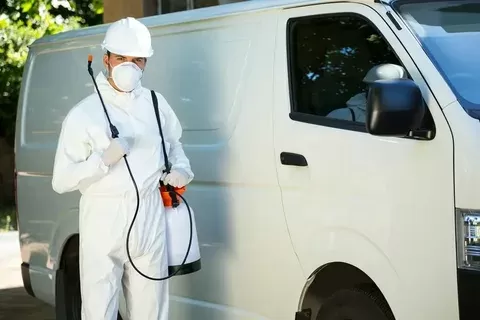In New York City, effective pest control hinges on comprehensive training and education. This article explores how structured programs equip professionals to address the city's unique pest issues.
The Problem: Urban Pests and High Stakes
Pest infestations in NYC aren’t just an annoyance—they’re a persistent public health risk. Rodents, roaches, and bedbugs thrive in the city's older buildings, dense housing, and tightly packed commercial spaces. For residents, the consequences range from damaged property to real health concerns, especially for children and the elderly.
Add to that, many of these pests have grown resistant to standard treatments. DIY methods or untrained handling often push them deeper into the cracks—literally and figuratively. Pest problems don't just go away. They escalate.
Why the Status Quo Isn’t Enough
It’s not that pest control services don’t exist—there are plenty. But the real gap lies in specialised training. Many technicians learn on the job with limited instruction. That leads to mistakes like misidentifying pests, using the wrong treatment methods, or failing to locate nesting areas. The outcome? Recurring infestations that frustrate both tenants and property managers.
This isn’t just an operations issue—it’s a knowledge issue. A technician who doesn't know what they’re dealing with can’t solve the problem. And in buildings with multiple units or mixed-use spaces, mistakes can ripple across entire floors or structures.
How Professional Training Solves the Issue
That’s where structured education steps in. A good pest control school goes beyond the basics of traps and sprays. It builds a real foundation in pest biology, behavioural patterns, and treatment strategy.
Professionals trained in modern, city-specific pest techniques learn:
-
How to safely apply treatments in sensitive environments like hospitals or schools
-
Ways to minimise resistance by rotating methods and chemicals
-
Integrated pest management (IPM) strategies to reduce long-term risk
-
How building systems (plumbing, HVAC) contribute to pest activity
The result? Technicians who can diagnose problems precisely and act fast—before pests spread.
Real-World Case Study: Brooklyn Brownstone Bedbug Crisis
In 2022, a four-unit brownstone in Park Slope experienced a severe bedbug outbreak. It began in one unit but quickly spread to the others. The landlord hired a general exterminator who treated the affected rooms with standard pesticide sprays. But two weeks later, the pests were back—and this time, in every unit.
After multiple failed treatments, a licensed technician who had completed pest control training NYC was brought in. She identified structural gaps behind baseboards, uncovered nesting sites inside a shared laundry room, and discovered improper disposal of infested furniture.
Her approach involved:
-
Physical removal and targeted chemical treatment in affected zones
-
Sealing harbourage points in walls and under flooring
-
Education for tenants on prevention (laundering, decluttering, monitoring)
Within three weeks, activity dropped to zero. Six months later, still pest-free. The difference? Skill, training, and a clear strategy.
Learning for Longevity
Pest control isn’t static. Urban environments change. Pests adapt. If technicians aren’t continually upskilling, infestations will keep recurring. Structured courses and ongoing education, especially those tailored for city environments, build long-term resilience in the workforce.
It’s also about public trust. Tenants need to believe that the person entering their home knows what they’re doing. The moment a technician explains why your radiator is a roach magnet, or how bedbugs hitch a ride in luggage seams, that trust builds.
Why Training in NYC Matters
The city has unique problems. High-rise buildings. Shared walls. Rats in subway tunnels. Techniques that work in suburban settings don’t always translate to urban density. That’s why a pest control school focused on NYC conditions is so valuable—it prepares techs for real-world scenarios they’ll actually encounter.
In fact, training institutions that focus specifically on NYC pests give professionals a strategic edge. From navigating city regulations to understanding borough-specific patterns, localised education makes a clear difference.
Final Thoughts: Skills Are the Solution
For property managers, business owners, and residents alike, the message is clear: don’t settle for guesswork. Demand professionals who know the science and the strategy. The path to safer homes and cleaner buildings starts with better-trained technicians.
If you’re facing recurring infestations—or if you’re a technician looking to level up—invest in proper training. NYC deserves more than band-aid fixes. It needs long-term, informed solutions.
📱 +1 (718) 284-7378

 By Andrew Kevin
By Andrew Kevin